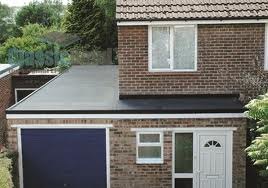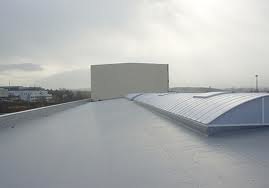How to Install Rubber Roofing
There are definite characteristics that every person should look for in roofing. Among the most important are ease in maintenance, durability, and affordability. When faced with these concerns, the right decision nine times out of ten is rubber roofing. This material provides a sound investment in addition to easy installation. The following will provide an insight into how to install rubber roofing and will give you the tools that you need to put a system in place that can be relied upon.
install rubber roofing and will give you the tools that you need to put a system in place that can be relied upon.
Money Matters
Rubber roofing cost is much lower when compared to that of traditional asphalt shingles or other conventional materials. On top of this advantage is the fact that a rubber roof is extremely durable. When compared with the average lifespan of most roofing materials, a rubber will perform better and deliver more for your money. If you are considering learning how to install rubber roofing, then the benefits that are set to come your way are undeniable. Homeowners testify again and again to the advantages in roofing that this material puts on their side. It is not only the cost of new roof materials that causes them to love this material, it is the ease of installation, the efficiency that comes with the process, and the pride in taking back control of this most vital element of their home that sways their decision.
Consider It an Investment
When you learn how to install rubber roofing on your own, you virtually take the cost of a roofing estimate out of the equation for a new roof. The only time you can expect any expense outside of rubber roofing materials will be when it comes time for repairs. Because you have chosen rubber as your roofing material, these times will be far and in between. A rubber roof allows you to control internal environments with ease and is not susceptible to the same kinds of degradation that asphalt and wooden shingles fall prey to. When you consider an investment into any type of structure, rubber roofing should be one of the primary elements that give you an advantage.
Rubber roofing is much lighter than any other material that is commercially available. It is also Eco-friendly due to the fact that the rubber shingles are typically composed of recycled materials. This reduces costs and reduces the impact that you are making on the environment. Rubber is much more flexible than any conventional material, making your roof less susceptible to damage from contradiction and expansion with extreme fluctuations in temperature. Even repairs that must be done will come with longer warranties due to the strength of the material that you are using.
Put It In Place
Installing a rubber roof does not depart drastically from normal roofing installation. The only real requirement is that you strip the roof down to its plywood base. From here, you simply measure for vents and the roof dimensions. Prepare your adhesive, clean the surface, and you are ready to begin. Each shingle will be an addition that adds to the final, aesthetically-pleasing  roof of which you have always dreamed. This material works on any slant and any type of roof, commercial or residential. Each shingle is nailed into its proper row and seams only require the addition of latex tape or sealant in order to create a flawless seal.
roof of which you have always dreamed. This material works on any slant and any type of roof, commercial or residential. Each shingle is nailed into its proper row and seams only require the addition of latex tape or sealant in order to create a flawless seal.
More Benefits
You can also take additional steps that will drastically the need for maintenance over time. Rubber roofing possesses the unique quality of being able to sustain rubber coating systems. These products can be spread over the entire surface of the roof in order to create yet another protective barrier. The chances of needing roof repair are severely lessened over time.